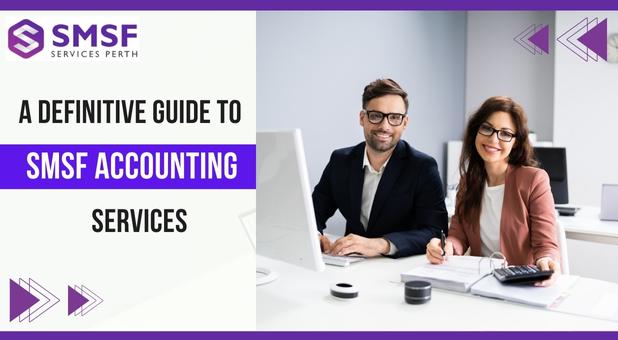
Self-managed superannuation fund, popularly known as SMSF, is a type of a super fund that is privately owned and can be managed privately as a trustee. In Australia, the trustees of an SMSF have complete access and control over the superannuation setup of the fund. There can be multiple trustees in this superfund. Here control over the SMSF implies that the trustees have the freedom to decide when and how the investments will be made per their future requirements.
Before you jump on to a conclusion, let’s recollect the essential facts regarding SMSF.
The Fundamentals of SMSF
Monetizing and managing SMSF might look fascinating, but it is a peculiar task. Thus to fathom this subject meticulously, you need to cater to the basics first.
First things first, before you begin with SMSF, decide whether you want to go with an individual or corporate trustee structure. For a corporate setup, you can have up to six members that can be trustees.
SMSF generally has a fixed cost. Before considering and running SMSF, you must check the price. Having a bare minimum balance of $250,000 or more is quite economical to choose SMSF accountants.
There are some other aspects that you must undertake, i.e., the assistance of an accountant will be required for the financial statements and filing the text returns, you will need to pay for the financial advice and Insurance for the members as well, and pay for the supervisory levy. And despite doing all this, you will also be required to conduct your audit.
An overview of SMSF Accounting Services
The three central superannuation super funds are – self-managed super funds, industry funds, and retail funds. Our concerned fund here is a Self-managed super fund, also known as a DIY super fund.
Self-managed super funds have gained popularity because of the significant benefits it accounts for:
- The assurance of better performance and scalability than other funds.
- The asset investment flexibility with SMSF is more than the other existing super funds like industry and retail super funds.
- The ‘complete control’ factor with the superannuation is a primary thing that drives people more towards SMSF.
Managing SMSFs involves risks and responsibilities.
Risk and Responsibility is the first thing that knocks on your door whenever you have any investment or insurance plan on board. To prevent risks, you can opt for insurance policies of the superfund like permanent disability insurance, general income protection Insurance, and Death Cover. Not just SMSF accounting services, whichever services you prefer, it’s customary to go through the possible risk scenarios and taxation for the chosen insurance structure.
It’s also required to go through the premiums, and long terms costing the preferred Insurance for superannuation will cost till you can redeem the final benefits.
Holding your Insurance inside Super can be a cheaper way to be covered. Generally, you can purchase Death cover (Term Life), Total and Permanent Disability (TPD), and Income Protection insurance inside Super.
Key takeaways to prevent possible risks and scale up the responsibilities under SMSF accounting services.
- The premiums of the Insurance can curtail the retirement benefits of the policy. It’s suggested to opt for a plan outside the superannuation.
- If the death benefit is exercised for a non-dependent adult or a financially non-dependent, then the tax will be imposed on the person concerned.
- There is a tax levitation on TPD insurance claim payouts. This imposition reduces the payment amount when it is required.
- Death and TPD insurance can be tax-free if it’s not a natural part of superannuation.
Strategic plans for SMSFs
Structuring SMSF can be pretty hectic. Also, there are too many things one needs to optimize for a great investment strategy. So here are the categorized stages to lead you to a successful SMSF setup.
Stage 1: Fathom the Legal technicalities thoroughly
Make sure that your checklist comprises all these requirements;
- Calculated risk and Responsibility
- The offered SMSF liquidity
- All members and trustees of the SMSF have insurance policies
- Diversification of Investment
- The liabilities the SMSF can fulfill
SMSF liquidity here comprises how quickly the conversion of funds into Cash is possible. The SMSF strategy document review takes place annually, a mandatory legal requirement that one must not miss out on.
Stage 2: Comprehend the risk and concerning responsibilities
As mentioned earlier, risks should be calculated before you commit any investment or insurance profits. For every investment strategy, there is a different set of troubles. If the expected returns are higher, the risks will be even higher.
The nature of risks is known before the possible threat can be avoided. Also what is the period of profits is a considerable fact. To elaborate, we can mention that if it’s your retirement time, it is better to go for investment with lower risks. Whereas if you are in a phase where you can easily bear losses, then in that scenario, you can go for a more considerable risk-associated strategy.
Stage 3: Diversification of the Investments
Putting all your money into one place is a common mistake many people commit. Financial advisors and accountants always suggest making multiple investments. This is called the diversification of investments. This works for every model.
If one of your assets cannot offer pliable returns, you always have a safe hand, i.e., your other investments to balance. Industry experts and financial advisors suggest making small but multiple investments instead of a single significant investment.
Stage 4: The SMSF liquidity
Liquidity here signifies how quickly the cash flow of the SMSF liabilities can take place. For all the SMSF liabilities, bank fees, pension payments, audit fees, annual fees, and taxation, to name some significant ones, Cash is the best liquid asset.
Illiquid assets are not bad, but they take a significant time the liquefaction. Thus, the SMSF owner needs to know if there are enough liquid assets to comply with the SMSF costing respective to the chosen strategy.
Stage 5: Opting for the perfect Insurance
Optimizing Insurance is a piece of customary advice for the investment strategy. Whether it is for yourself or some trustee, Whether it’s outside the superannuation or not, Insurance must be considered.
SMSF offers an insurance policy for these grounds:
- Death Insurance
- Terminal health insurance
- If someone is not financially dependent
Whichever insurance policy you choose, it should be a vital part of your Investment planning. Keep a note of the fact that trauma insurance cannot be offered to the fund trustees.
Stage 6: Consulting SMSF Accounting Services
SMSF consulting services are always an aid for strategizing your insurance strategy with finesse. They can help you create your investment strategy by providing an investment template. Also, they can offer excellent assistance for taxation and legal subjects.
An overview of the pros and cons of SMSF
Pros
- SMSF accounting services are commendable preferences for long-term financial planning tools. The primary reason for this is its potential to cater to an Account Based smsf pension, and this structure can serve as a payout income. The benefit of Account-based assistance is that it enables the members to preserve the asset of the accumulation phase.
- SMSF accounting services provide a lot of exposure and flexibility to your doorstep. Limited Recourse Borrowing Arrangements, Lending to a third party are a few. Other superannuation structures might not be that amenable to investment flexibility.
- SMSF offers compliant flexibility for the administration and management of the superannuation Fund.
- If the amount of capital and the chosen model are selected wisely, SMSF accounting services are quite economical.
Cons
- Due to the lack of knowledge of superannuation, the risk of non-conformity under the Superannuation Industry Supervision Act also referred to as SIS, is probable.
- With SMSF accounting services, the cost for other insurance purchases like death or disability insurance might be a little hefty.
- Running the small account balances is relatively costlier with SMSF accounting services.
- The management of the ongoing funding, at times, gets quite time-consuming. The complete control factor allows the members to govern how much time and involvement they want to invest. But despite this freedom, the bare minimum is also relatively high compared to the public superannuation fund. Even when one has potential advisors and accountants to provide the requisite advice, the members must review these pieces of Smsf advice to scale the decision with their capacities and scenarios.
- Issues regarding the superannuation of SMSFs accounting services cannot be tackled under Superannuation Complaints Tribunal.
In conclusion
Self-managed superannuation funds are compliant and investment-worthy, but the condition is one must know the risk and responsibilities that revolve around them. What are the legal technicalities and possible disadvantages SMSF can undertake for the right insurance plan to be taken? Once these factors are fathomed well, SMSF accounting services are a factotum for the owners.